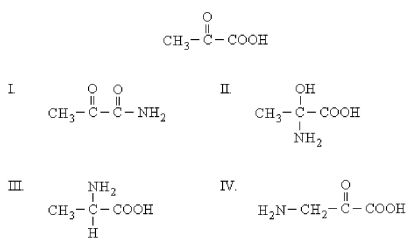A) the generation of glutamate when NH₄+ is present at high concentrations in E.coli.
B) the conversion of glutamate to glutamine in most organisms.
C) the use of an NADPH-dependent enzyme for reductive amination in Neurospora crassa.
D) the degradation of amino acids and generation of NH₄+ in mammals.
F) All of the above
Correct Answer

verified
Correct Answer
verified
Multiple Choice
In mammals,most amino acids undergo deamination in the ________.
A) liver
B) kidney
C) pancreas
D) mitochondria of all cell types
F) A) and C)
Correct Answer

verified
A
Correct Answer
verified
True/False
Nitrogenase catalyzes the reduction of N₂ to nitrate.
B) False
Correct Answer

verified
Correct Answer
verified
Multiple Choice
Which of these types of proteins are likely to have short half-life and be specifically targeted for degradation?
A) Hormone protein.
B) Mutated (abnormal protein) .
C) Transport protein.
D) Structural protein.
F) A) and C)
Correct Answer

verified
Correct Answer
verified
True/False
A large percentage of nitrogen,undergoing metabolism,comes from nitrogen fixation.
B) False
Correct Answer

verified
False
Correct Answer
verified
Multiple Choice
Which is not produced from the degradation of branched-chain amino acids?
A) Succinyl CoA.
B) Acetyl CoA.
C) Malonyl CoA.
D) Propionyl CoA.
F) A) and B)
Correct Answer

verified
Correct Answer
verified
True/False
Periportal cells of the liver are nearest to the inflow of blood and have a higher capacity for urea synthesis than the perivenous cells that are near the outflow.
B) False
Correct Answer

verified
Correct Answer
verified
Multiple Choice
Defects in which of the following may result in elevated levels of phenylalanine?
A) Deficiencies in dihydropteridine reductase.
B) Deficiencies in 4a-carbinolamine dehydratase.
C) Defects in the biosynthesis of tetrahydrobiopterin.
D) All of the above.
F) None of the above
Correct Answer

verified
Correct Answer
verified
Multiple Choice
Which of the following is an amide-containing amino acid?
A) Alanine.
B) Arginine.
C) Aspartate.
D) Asparagine.
F) A) and D)
Correct Answer

verified
Correct Answer
verified
Multiple Choice
Ammonia is incorporated into amino acids via which of the following?
A) Glutamate.
B) Glutamine.
C) Carbamoyl phosphate.
D) All of the above.
F) B) and D)
Correct Answer

verified
Correct Answer
verified
Multiple Choice
In the urea cycle which molecule is transported from the mitochondrial matrix to the cytosol as ornithine is transported in the opposite direction?
A) Arginine.
B) Citrulline.
C) Glutamate.
D) Carnitine.
F) A) and B)
Correct Answer

verified
Correct Answer
verified
Multiple Choice
Aspartate is the precursor for which of the following amino acids?
A) Lysine.
B) Threonine.
C) Methionine.
D) All of the above.
F) All of the above
Correct Answer

verified
D
Correct Answer
verified
Multiple Choice
What would be the product of the transamination of the structure shown below? (The unionized forms are shown. ) 
A) I
B) II
C) III
D) IV
F) A) and C)
Correct Answer

verified
Correct Answer
verified
Multiple Choice
Malignant lymphocytes of patients with acute lymphoblastic leukemia can be treated with injections of bacterial asparaginase because
A) the levels of asparagine in malignant cells is too high.
B) this reduces the levels of asparagine in blood plasma and that starves malignant cells.
C) this increases the levels of asparagine in blood plasma and this promotes destruction of malignant cells.
D) the levels of asparagine in malignant cells is too low.
F) C) and D)
Correct Answer

verified
Correct Answer
verified
True/False
The disease alcaptonuria is caused by a defect in the kidney transport of cysteine.
B) False
Correct Answer

verified
Correct Answer
verified
Multiple Choice
Microorganisms capable of fixing nitrogen into a form usable by animals obtain the energy for this process from ________.
A) lightning
B) oxidation and reduction (respiration)
C) photosynthesis of host plants
D) soil nutrients
F) A) and C)
Correct Answer

verified
Correct Answer
verified
Multiple Choice
Industrially,nitrogen for use in fertilizers is converted to ammonia by ________.
A) a simple,energy efficient reaction of N₂ with water
B) a cryogenic (very low temperature) process between N₂ and H₂
C) special catalysts which drive the reduction of N₂ by H₂
D) a reaction between nitric acid and hydrogen gas
F) A) and D)
Correct Answer

verified
Correct Answer
verified
Multiple Choice
Mammalian carbamoyl phosphate synthetase I
A) is one of the most abundant enzymes in liver mitochondria.
B) is involved in the urea cycle.
C) catalyzes the synthesis of carbamoyl phosphate from bicarbonate and ammonia.
D) A and B only.
E) All of the above.
G) B) and D)
Correct Answer

verified
Correct Answer
verified
Multiple Choice
Glutamine is metabolised to biocarbonate ion in the ________ to replenish this important component of the blood buffering system.
A) liver
B) kidneys
C) red blood cells
D) muscle tissue
F) B) and D)
Correct Answer

verified
Correct Answer
verified
Multiple Choice
Nitric oxide is produced from which reaction?
A) Arginine to citrulline.
B) Glutamate to α-ketoglutarate.
C) Bicarbonate to carbamoyl phosphate.
D) Tryptophan to acetyl CoA.
F) A) and B)
Correct Answer

verified
Correct Answer
verified
Showing 1 - 20 of 84
Related Exams